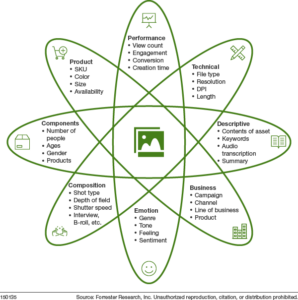Minivans Vs. Motorheads — Why The Right Content Fuels Proper Personalization
Digitally savvy customers have increasingly high expectations that put brands under pressure to deliver the right content, at the right time, to the right individual. In fact, 80% of US online customers are comfortable sharing some form of personal information to personalize their retail experience, according to Forrester Analytics’ Consumer Technographics® survey data.
Customers want personalized, relevant information across all touchpoints on their path to purchase; they don’t want to see items they’d never consider buying. So if you collect every iota of data about your customer — their attitudes, sentiments, affinities, activities, or what we call the 360-degree view of the customer — you’ll deliver personalized experiences, right? Not quite (see graphic below).
If you know your customer is a 25-year-old male who has recently searched for “Mercedes Benz,” “V6,” “matte black,” and has #motorhead on his social pages, you might push an offer and image of a black car onto your auto dealer homepage. However, if the only metadata you have on your stock car images are “car” and “black,” you might be showing a minivan to the wrong guy.

We spoke with brands across industries, from financial services to retail, and they consistently told us that they don’t know enough about their content to tie it to the right customer at scale. Misfires in personalization are found in the gaps between customer and content intelligence. Many companies struggle to link the two because:
- Content lacks sufficient metadata to fuel personalization. If content isn’t enriched with enough metadata, selecting the right item for the right customer is a guessing game. If a car manufacturer’s stock images live in the DAM and model specifications live in the PIM, it’s impossible to enrich content without communication between the two systems.
- Content is disconnected and disorganized. Between archaic folder systems, multiple CMSes, and siloed teams, it’s a challenge to locate and reuse content across channels.
- Content isn’t atomized and reusable. Most content isn’t designed to be broken down, repurposed, and reused. Agencies aren’t incentivized to create content this way; they’d rather you pay for two separate projects. By assembling content from smaller building blocks, you can swap out and remix elements to cater to your specific prospect or customer.
Personalization initiatives are good ways to enhance your customer experiences, but without the marriage of customer and content intelligence, your experiences aren’t really personalized at all. Check out our recent report, “There’s No Personalization Without Content Intelligence,” to engineer your content for better customer experiences.
Want to learn more about marrying your customer data with your content? Set up an inquiry with me.
